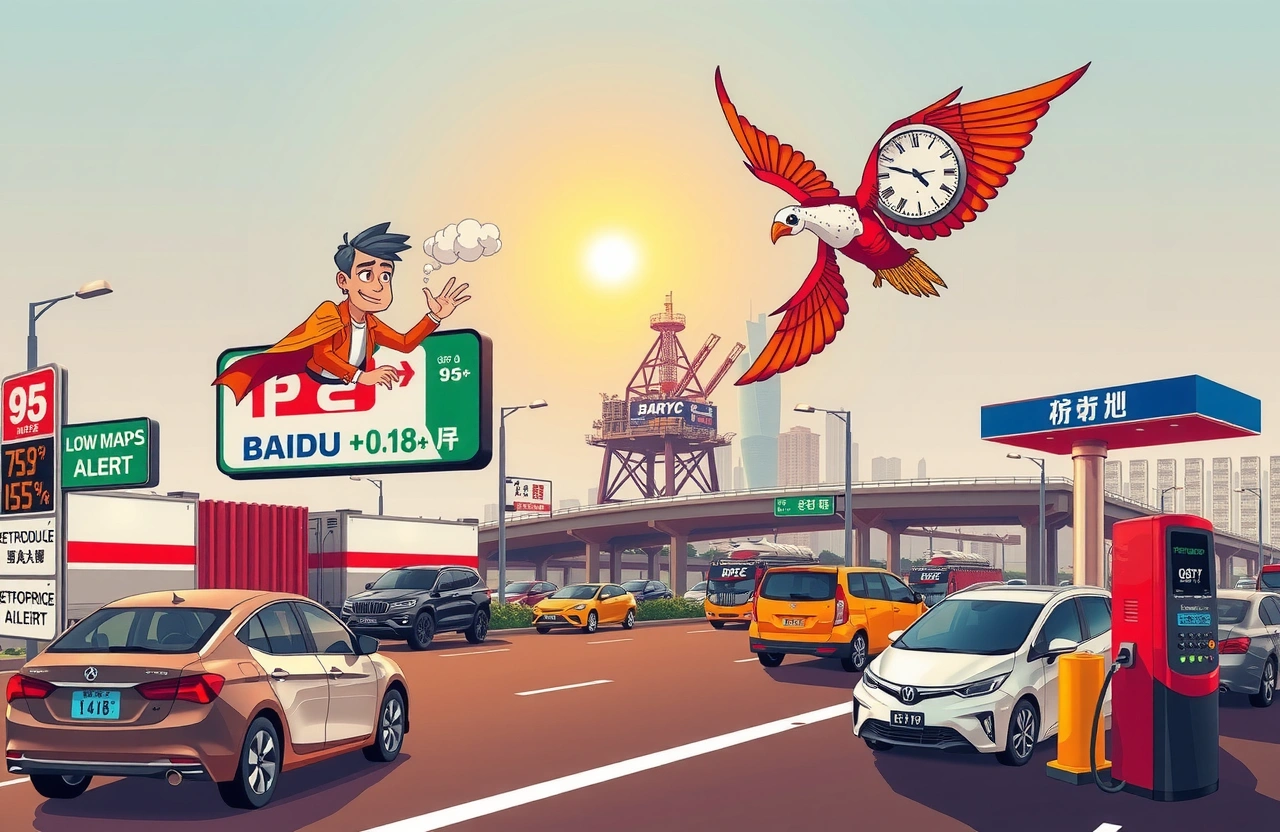Breaking the News: China’s Latest Fuel Price Adjustment
The National Development and Reform Commission (NDRC) has confirmed new gasoline and diesel price increases taking effect July 1st at 24:00. This latest fuel price hike—the fifth this year—adds 235 yuan per ton for gasoline and 225 yuan per ton for diesel. For everyday drivers, this translates to average increases of 0.18 yuan per liter for 92-octane gasoline, 0.19 yuan for 95-octane, and 0.19 yuan for 0# diesel. Filling a standard 50-liter tank with 92-octane fuel now costs approximately 9 yuan more than before. These adjustments reflect ongoing volatility in global oil markets during the latest pricing window (June 17-30), where benchmark crudes averaged significantly higher than the preceding cycle. With most Chinese families heavily dependent on personal vehicles, understanding the causes and strategies becomes essential financial self-defense. According to the International Energy Agency, domestic fuel price fluctuations directly impact inflation rates and consumer spending habits.
Decoding the Ripple Effect
Global Oil Market Turbulence
International markets have experienced extreme volatility since early June. Brent Crude surged 9% monthly to reach $86.50/barrel as Hurricane Barry threatened Gulf of Mexico production, compounded by escalating conflict in the Middle East. Brent crude futures chart shows significant price swings since June. Goldm Sachs Global Investment reports that OPEC+’s extended production cuts created a 2.3 million barrel-per-day supply deficit, while China’s manufacturing recovery increased demand unexpectedly by 4.1%. Refinery disruptions in Singapore exacerbated shortages in Asian markets. Global industry analysts agree these factors form a perfect storm triggering China’s fuel price hike.
Domestic Economic Impact
The diesel cost rise hits hardest:
– Logistics firms projecting 3-5% transport cost increases by Q3
– Fresh produce prices estimated to jump 1.8% nationwide within two weeks
– Tencent Mobility Labs data reveals fuel accounts for 34% of ride-hailing drivers’ operating expenses. This fuel price increase effectively reduces their daily earnings by 5-7 yuan—impacting livelihoods dramatically. SMEs face difficult choices between absorbing costs or risking customer loss through price increases.
Strategic Fuel Efficiency Measures
Minimizing wallet impact requires proactive solutions:
– Maintain optimal tire pressure (undeflated tires increase fuel consumption by 3%)
– Reduce vehicle weight: remove unnecessary items from trunk (every 100kg cuts efficiency by 2%)
– Plan efficient routes via apps like Amap or Baidu Maps to avoid traffic
As International Council on Clean Transportation expert Zhang Wei explained: ‘Simple behavioral changes could offset this fuel price increase entirely for many motorists.’
Advanced Driving Techniques
– Cruise control usage on highways improves mileage up to 7%
– Gradual acceleration: avoid revving beyond 3,000 RPM in lower gears
– Electrical system optimization (dim screens, minimize AC usage can save 0.5 liters/hour)
View real-world fuel-saving dashcam demonstrations compiled by BYD. Mastering these techniques provides ongoing savings beyond the current gasoline price hike.
Navigating Future Price Volatility
Analyst Projections Through 2025
J.P. Morgan’s China Energy Outlook predicts two more adjustments this year—likely +2-3% in September unless hurricane season disrupts U.S. refineries. China Merchant Securities calculates every $1/barrel oil increase adds 0.5% probability of domestic price changes. Geopolitical risks remain high: potential embargoes could trigger triple-digit oil prices before Christmas. Winter summer price trends typically reduce volatility. Sign up for pricing alerts through services like PetroPrice to anticipate changes.
Alternative Transportation Options
Diversifying beyond personal vehicles cushions against diesel cost rises:
– Carpooling: DiDi Hitch reduces individual costs 60-70% on commuting routes
– E-bikes: Niu Technologies models offer 100km range for less cost than one tank refill
– Beijing/Shanghai metro passes provide unlimited monthly travel at fixed prices unaffected by the fuel price hike
Beyond daily commuting, consider bundling errands to reduce trips—Pure EV owners remain completely insulated from gasoline price hikes.
Short-Term Solutions for Rising Costs
Refueling Timing Strategies
Beat the fuel price increase by filling tanks before July 1 at 24:00 implementation. Smart refueling tips:
– Use discount programs like Sinopec Smiles rewards (save 0.3 yuan/liter accruing points)
– Refuel weekday mornings when fuel density is highest due to cooler temperatures
– Partner with neighbors for bulk purchases from wholesale distributors (requires 500L minimum)
Download fuel comparison apps for live station pricing—some outlets delay adjustments 12-24 hours.
Financial Mitigation Approaches
Create personal ‘fuel uncertainty funds’ through:
– Round-up savings: Apps that invest spare yuan from every transaction
– Provincial subsidies: check local government programs like Guangdong’s Taxi Driver Relief Fund
– Fuel-efficient vehicle swaps: Some dealerships offer ‘trade-in boosters’ during periods with gasoline price hikes
For ride-hail drivers and truckers, temporarily increasing fares by 3-5% often manages costs without customer attrition.
Turning Knowledge Into Power
The National Development and Reform Commission’s diesel and gasoline price hike represents both challenge and opportunity. While consumers face inevitable increases at the pump, implementing these practical solutions can neutralize—or even reverse—the financial effects. Remember to consistently check tire pressure, optimize driving behavior, and explore alternatives to single-occupancy trips. As global markets remain turbulent, your proactive approach positions you ahead of the next adjustment cycle. Share your cost-saving successes and subscribe to Yuan Trends Automotive for continuing strategies to navigate China’s evolving transportation landscape.
Sources: National Development and Reform Commission Price Adjustment Notice, China Association of Automobile Manufacturers Fuel Efficiency Reports, OPEC Monthly Oil Market Report



